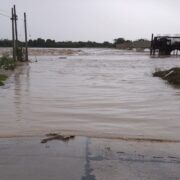‘Very sorry’ isn’t enough

The floodwaters that wreaked havoc in Cebu province did not swell and spill from rainstorms alone but from years of substandard flood controls, destructive land development, and the clandestine looting of public funds.
Typhoon “Tino’s” rampage killed over 200 people and displaced more than 3 million across eight regions. That is the staggering lethal cost of public works corruption—and it is still climbing.
As Supertyphoon “Uwan” followed in Tino’s wake, it seems Filipinos are fated to suffer a double whammy of back-to-back storms and uncoordinated local responses, compounded by illegal extraction and construction activities and useless flood control projects.
In hardest-hit Cebu, still reeling from the Sept. 30 earthquake, low-lying communities were swallowed by floodwaters after rivers overflowed, trapping residents on rooftops and sweeping away vehicles and houses. Dozens of people drowned, with their bodies recovered only days after the storm, buried under mud or pinned beneath debris that used to be their homes.
Not acts of nature
“We did everything we can for the typhoon but, you know, there are really some unexpected things like flash floods,” Cebu Gov. Pamela Baricuatro said, struggling to explain the tragedy. But many of those “unexpected things” were not acts of nature but the predictable outcomes of official negligence.
The governor acknowledged that torrential rains were likely worsened by heavy siltation from quarrying and by substandard flood control projects. “There has to be an investigation of the flood control projects here in Cebu and people should be held accountable,” she said.
That investigation will now have to include more than 500 flood control projects in the province alone. Of these, 343 were implemented during the Duterte administration, with two already terminated, while 168 were undertaken under the Marcos administration, 55 of which are in progress.
President Marcos has declared a state of national calamity and ordered a review of all these contracts. “That’s also the reason why President Marcos ordered an investigation [over flood control projects]. Budgets have been allocated for these, yet they seem to be not functioning at all,” Palace press officer Claire Castro quoted the President as saying.
Direct result of corruption
Mr. Marcos knows these floods are the direct result of corruption, and the culprits couldn’t be more obvious: contractors who cut corners, developers who circumvented law, and the officials and lawmakers who not only coddled them but, in several cases, were the contractors and developers themselves.
In the aftermath of the typhoon, rescuers from the Philippine Red Cross received desperate calls from residents trapped on their roofs in Liloan, Consolacion, and Mandaue. “We have received so many calls from people asking us to rescue them from roofs and from their houses, but it’s impossible,” said Red Cross Secretary General Gwendolyn Pang.
Tragedy likewise befell an Air Force helicopter ferrying relief goods to storm-hit areas when it crashed in Agusan del Sur, killing all six onboard, an unfortunate result of systems failing both those who need rescue and the rescuers as well.
Meanwhile, more than 2 million people have been affected, according to the National Disaster Risk Reduction and Management Council. Almost half a million individuals are sheltering in evacuation centers, while hundreds of thousands more have no roofs above their heads. A number of bridges remain impassable; large swaths of the Visayas are without electricity, leaving households in the dark. The Department of Health has raised a “code white” alert for rapid medical deployment, while the Department of Transportation and the Department of Energy scramble to repair roads and restore power lines.
Fatal consequences
But these belated mobilizations only illustrate how the country’s disaster response relies more on human courage and survival skill than institutional strength.
It is not enough to blame geography. Yes, the Philippines sits in the path of 20 tropical cyclones and endures countless earthquakes each year, but since when did climate vulnerability become an excuse rather than a call to action?
Agencies tasked with probing public works corruption, from the Independent Commission for Infrastructure to the Office of the Ombudsman, must take into account not only the offenses committed by officials, developers, and contractors but their fatal consequences.
After all, what makes each storm deadly in the Philippines is not just flooding and landslides. When flood control funds go to the pockets of the corrupt, when dikes, pumping stations, and drainage systems routinely fail, when evacuation plans are imaginary and search-and-rescue teams are nonexistent, the people have little patience to listen to their President say he’s “very, very sorry.” For these Filipinos victimized twice over by corruption and neglect, the only apology that matters is accountability.





















